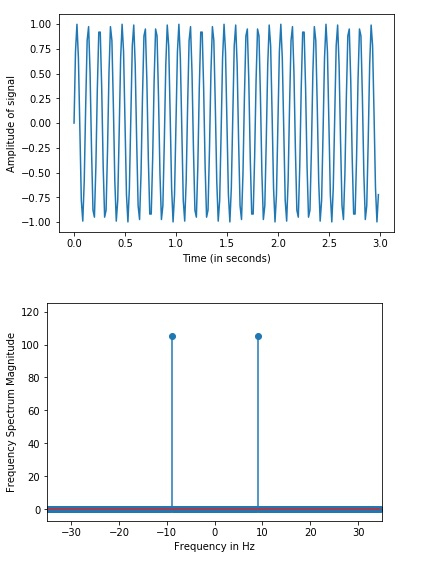
 Data Structure
Data Structure Networking
Networking RDBMS
RDBMS Operating System
Operating System Java
Java MS Excel
MS Excel iOS
iOS HTML
HTML CSS
CSS Android
Android Python
Python C Programming
C Programming C++
C++ C#
C# MongoDB
MongoDB MySQL
MySQL Javascript
Javascript PHP
PHP
- Selected Reading
- UPSC IAS Exams Notes
- Developer's Best Practices
- Questions and Answers
- Effective Resume Writing
- HR Interview Questions
- Computer Glossary
- Who is Who
How can discrete Fourier transform be performed in SciPy Python?
Discrete Fourier Transform, or DFT is a mathematical technique that helps in the conversion of spatial data into frequency data.
Fast Fourier Transformation, or FTT is an algorithm that has been designed to compute the Discrete Fourier Transformation of spatial data.
The spatial data is usually in the form of a multidimensional array. Frequency data refers to data that contains information about the number of signals or wavelengths in a specific period of time.
Let us see how this DFT can be achieved using the ‘SciPy’ library.
The graph is created using the matplotlib library and data is generated using the Numpy library −
Example
From matplotlib import pyplot as plt
import numpy as np
my_freq = 6
freq_samp = 70
time_val = np.linspace(0, 3, 3 * freq_samp, endpoint = False )
amp_val = np.sin(my_freq * 3 * np.pi * time_val)
figure, axis = plt.subplots()
axis.plot(time_val, amp_val)
axis.set_xlabel ('Time (in seconds)')
axis.set_ylabel ('Amplitude of signal')
plt.show()
from scipy import fftpack
A = fftpack.fft(amp_val)
frequency = fftpack.fftfreq(len(amp_val)) * freq_samp
figure, axis = plt.subplots()
axis.stem(frequency, np.abs(A))
axis.set_xlabel('Frequency in Hz')
axis.set_ylabel('Frequency Spectrum Magnitude')
axis.set_xlim(-freq_samp / 2, freq_samp/ 2)
axis.set_ylim(-7, 125)
plt.show()
Output

Explanation
- The required packages are imported.
- The data is generated with the help of Numpy library.
- This data is plotted as a sine wave on the console with the help of matplotlib library.
- Next, the ‘fftpack’ package is used to find the fast Fourier transform of the data generated.
- This data is again plotted on the graph.

Advertisements
